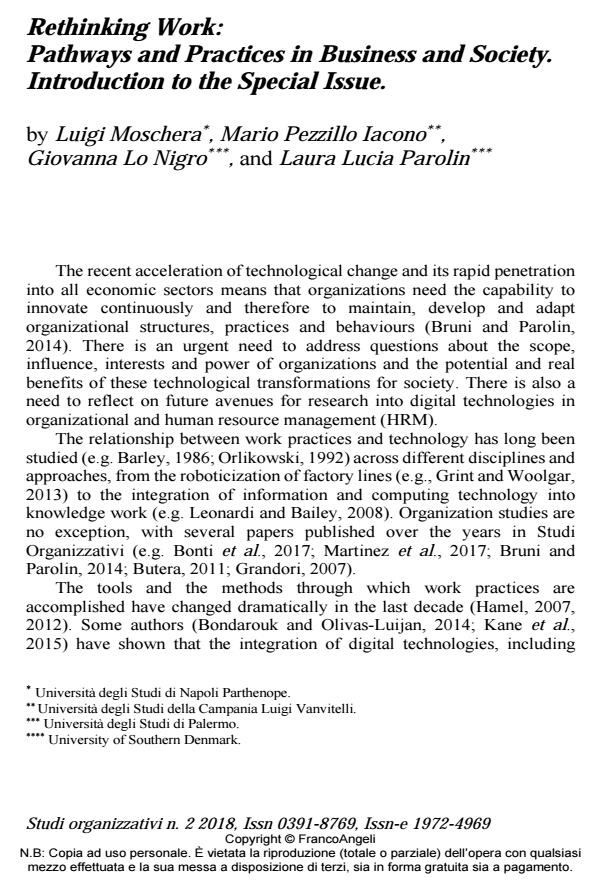Rethinking Work: Pathways and Practices in Business and Society. Introduction to the Special Issue.
Titolo Rivista STUDI ORGANIZZATIVI
Autori/Curatori Luigi Moschera, Mario Pezzillo Iacono, Giovanna Lo Nigro, Laura Lucia Parolin
Anno di pubblicazione 2019 Fascicolo 2018/2
Lingua Inglese Numero pagine 19 P. 9-27 Dimensione file 194 KB
DOI 10.3280/SO2018-002001
Il DOI è il codice a barre della proprietà intellettuale: per saperne di più
clicca qui

FrancoAngeli è membro della Publishers International Linking Association, Inc (PILA)associazione indipendente e non profit per facilitare (attraverso i servizi tecnologici implementati da CrossRef.org) l’accesso degli studiosi ai contenuti digitali nelle pubblicazioni professionali e scientifiche
- Trust, but verify.. Power relations and control practices in a smart working environment Silvia Doria, in STUDI ORGANIZZATIVI 1/2021 pp.24
DOI: 10.3280/SO2021-001002
Luigi Moschera, Mario Pezzillo Iacono, Giovanna Lo Nigro, Laura Lucia Parolin, Rethinking Work: Pathways and Practices in Business and Society. Introduction to the Special Issue. in "STUDI ORGANIZZATIVI " 2/2018, pp 9-27, DOI: 10.3280/SO2018-002001